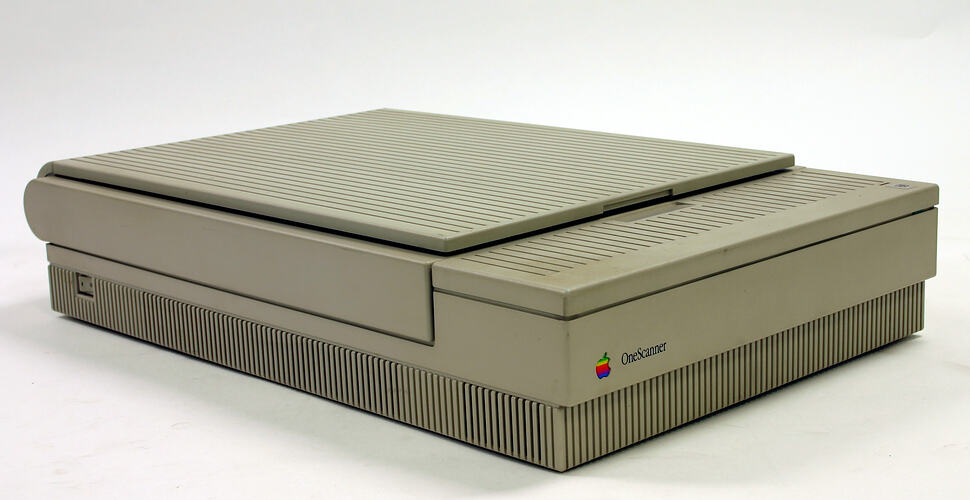Summary
Apple OneScanner, a digital imaging device, which was introduced in 1991 and discontinued in 1992.
When Apple scanners were introduced in 1988, this completed the transition from traditional to digitally based publishing. The scanner could capture images from photographs, paper, books and magazines for incorporation into files. Hand-drawn art could be quickly input onto the screen, where it could be digitally manipulated using graphics software.
Apple produced three models, the first with 16 shades of grey, then 256, then full colour.
A Macintosh with LaserWriter and Apple scanner could do some impressive things. Artwork such as engineering drawings and pen sketches were perfect targets for this scanner, allowing easy and precise corrections to hand drawings. Photographic reproduction and professional looking output became possible for everyone.
In the early 1990s, the donor ran his own manufacturing business and produced illustrated instruction manuals for the products he was manufacturing. The donor was an engineer who had produced these manuals for many years by typing, photocopying, and tedious and irreversible 'real' cut and paste. That all changed with the purchase of a Macintosh and the donor says that he was then able to try things out, to experiment. He says that by electronically capturing images, something that was then to him quite revolutionary, he had the freedom to 'see' ideas on the screen, with no costly wasted paper or ink or messy hands.
Part of a representative collection of hardware, software, trade literature and promotional material that documents the history of the Apple company, and its contribution to, and impact on the computer industry and society.
Physical Description
A rectangular, beige coloured machine with no cables
More Information
-
Collection Names
The Apple Company Collection, Internet Macintosh User Group (iMug) Collection
-
Collecting Areas
-
Acquisition Information
Donation from Mr Ralph Learmont, 22 Nov 2006
-
Manufacturer
Apple Computer Inc, Cupertino, California, United States of America, 1991
-
Inscriptions
On front: an embossed coloured Apple Logo and the words" OneScanner". On the top right =hand front corner is a start button with a specific icon.
-
Brand Names
-
Classification
Computing & calculating, Digital computing, Digital image capture
-
Category
-
Discipline
-
Type of item
-
Dimensions
550 mm (Length), 335 mm (Width), 115 mm (Height)
-
Keywords
Computer Hardware, Computers, Computing, Input Devices, Scanners, Making History - Apple Computer Collection


